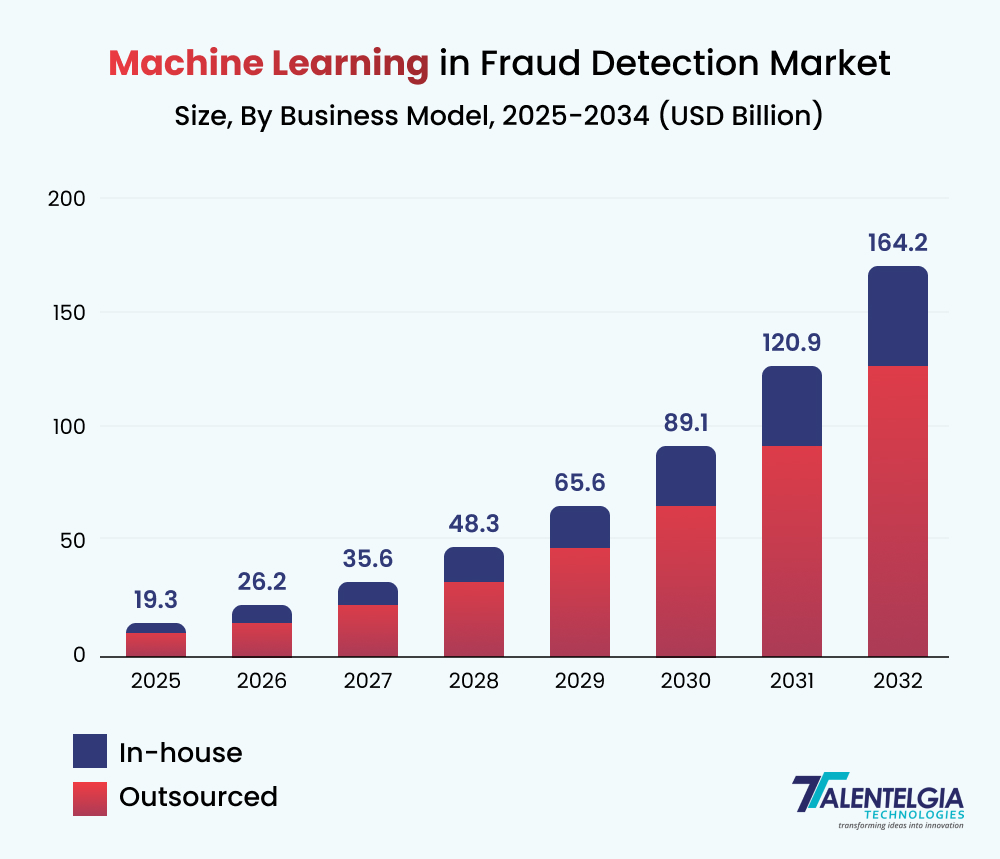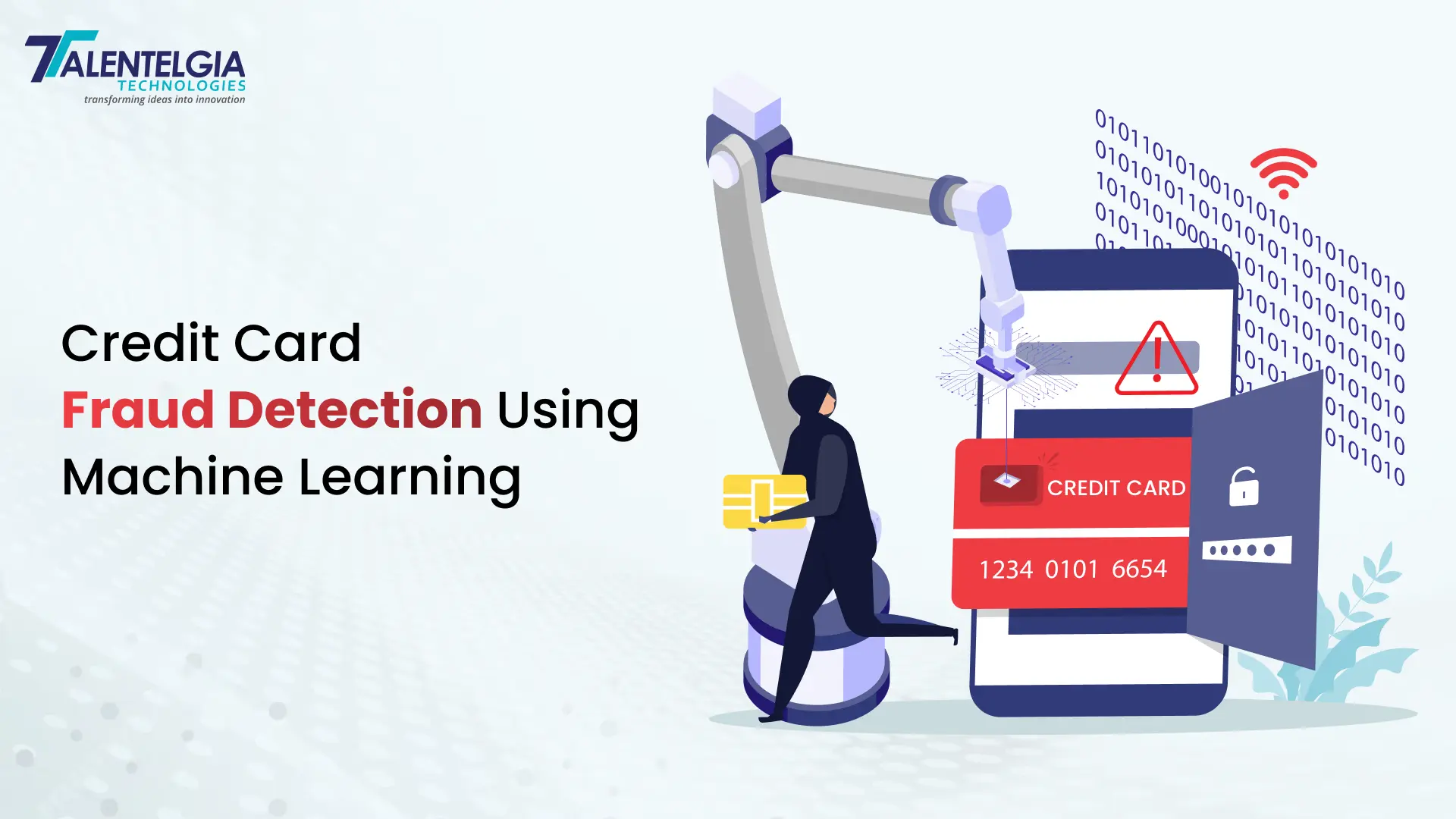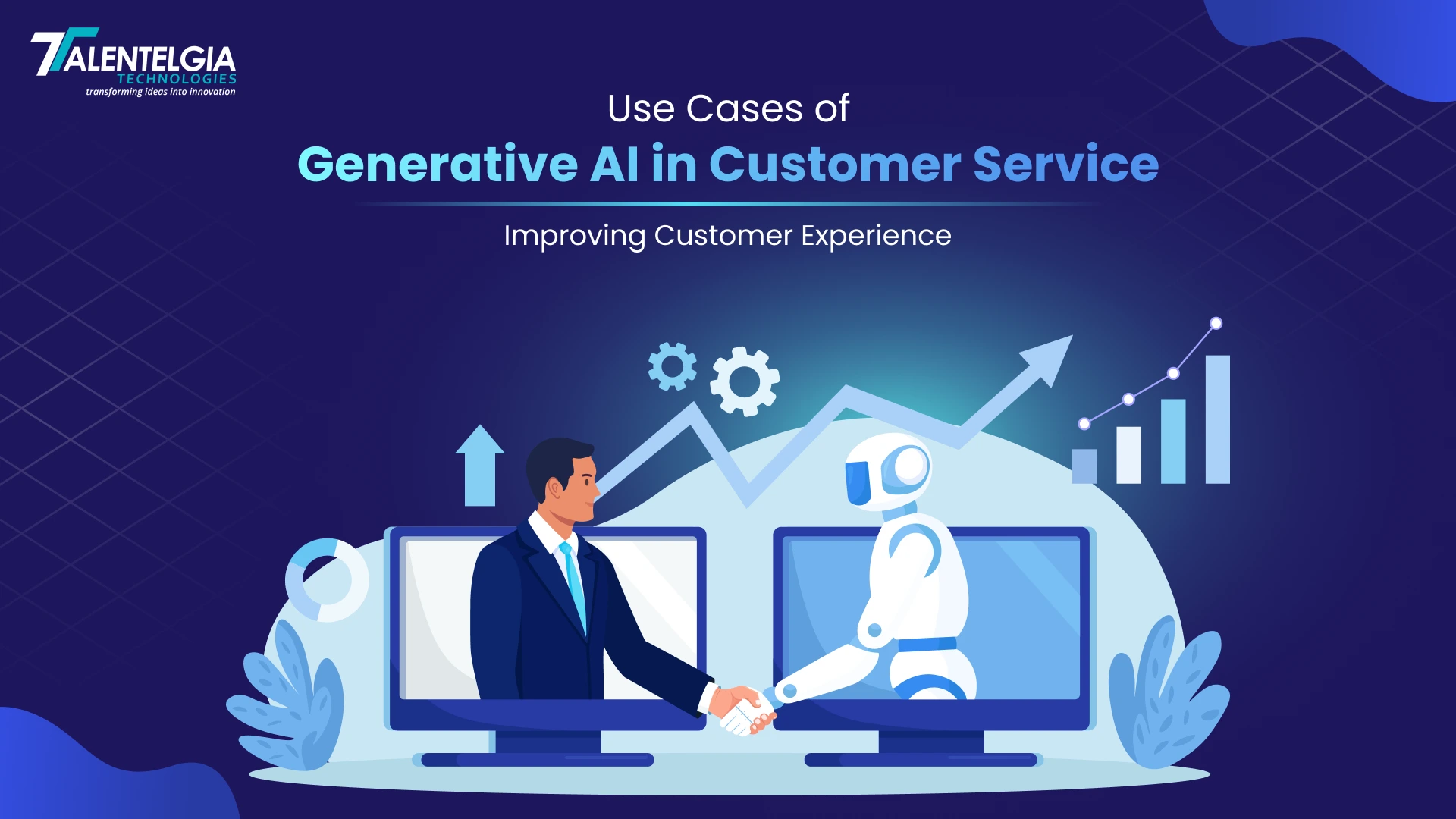A growing number of instances of fraudulent use of credit cards are alarming for both companies and individual customers. This high volume of online transactions is increasing the demand for credit card fraud detection systems.
Moreover, advanced techniques of using credit card fraud also limit the use of conventional methods to detect this cybercrime. This makes using machine learning development services for the detection of fraud for credit cards the right solution. Read below to find out more about it:
What Is Credit Card Fraud Detection?
Credit card fraud detection refers to identifying fraudulent or unauthorized transactions made through a credit card. Fraud may be in the form of unauthorized charges, identity theft, and account takeovers. The sooner they are detected, the lesser the financial loss and the more protection for customer trust.
If you are a business looking to build a credit card fraud detection system using machine learning to keep your users safe, you are at the right place. Let us discuss how the latest technologies can help you protect customer data.
Role of Machine Learning in Credit Card Fraud Detection
Machine learning is a part of AI development. It enables systems to learn through experiences and improve themselves over time without having them programmed for the same.
Therefore, using machine learning in the detection of credit card fraud is a great move. It analyzes the historical data regarding the transactions and brings into light any patterns and anomalies that come along with fraudulent activities.
Let us look at how machine learning revolutionizes fraud detection work. It will explain its role in real-time detection, accuracy enhancement, and how it adapts to changing fraud tactics.
1. Real-Time Detection
The machine learning model can process enormous amounts of transaction data in real time. Therefore, fraudulent activities are flagged in real-time. This reduces the loss of money through fraud and maximizes customer safety.
2. Increased Accuracy
Credit Card Fraud Detection systems can identify even the slightest patterns that other systems may not recognize with historical data. This minimizes false positives and negatives.
3. Flexibility
The strategies of the fraudsters may change. Therefore all of the models of machine learning need learning capabilities. This helps them retrain on new data.
4. Scalability
Credit card fraud detection using machine learning scales seamlessly to your business needs. This could be tens of thousands, hundreds, or millions of transactions per day.
Core Machine Learning Technologies in Credit Card Fraud Detection Systems

Machine learning is a robust technology. This makes it important to understand the machine learning technologies helpful in developing fraud detection systems in credit cards. We have briefly described some of these below:
1. Supervised Learning
This method utilizes only labeled data, such as fraud versus valid transactions, to train the models. The popular algorithms used are logistic regression, SVM, and random forests.
2. Unsupervised Learning
These are used when the available amount of labeled data is less. Similar transactions can be grouped by clustering algorithms like K-means and DBSCAN. It is helpful in the anomaly detection scenario.
3. Deep Learning
It is noticed that deep learning models, such as neural networks, can easily tackle complex data. CNN and RNN are two of the widely used ML techniques for fraud detection.
4. Hybrid Models
Hybrid models are the ones in which more than one machine learning technique is used to make the detection as accurate as possible. For example, unsupervised learning identifies anomalies; later, these detected anomalies can be classified through a supervised model.
Steps to Design a Credit Card Fraud Detection System
Creating an effective credit card fraud detection system using machine learning involves a systematic process. In this section, we’ll break down the key steps, providing insights into best practices and tools used at each stage.
1. Data Collection
Gather transaction data, such as the transaction amount, location, time, and merchant details. For preliminary testing, one typically uses public datasets like the Kaggle Credit Card Fraud Detection dataset.
2. Data Preprocessing
Clean the dataset – remove missing values, outliers, and noise; normalize numerical features and encode categorical variables for modeling.
3. Feature Engineering
Identify features that have the highest influence on fraud detection. These are velocity, frequency, and location. Good feature engineering is the way to better performance.
4. Model Training
Split data into training and testing subsets. Then, train machine learning models on the former and hyperparameters to get the best possible performance.
5. Model Evaluation
The model shall be tested through accuracy, precision, recall, and F1-score. There should be a balance between fraud detection and false positives.
6. Deployment
Implement the trained model in your transaction processing system and monitor its performance. Retrain it periodically by adding new data to keep the model accurate.
Why Machine Learning for Fraud Detection?
Investment in a credit card fraud detection system is an excellent strategic decision for businesses dealing with credit card transactions. There are several benefits of investing in credit card fraud detection based on machine learning. Some of these include:
1. Better Safety: The complex security algorithms can easily detect frauds that the basic systems would not identify.
2. Low Cost: The saving of loss and the money saved would save the overhead expense of operation at the time when a dispute resolution is made.
3. Customer Trust: Secure transactions enhance customer satisfaction and loyalty to the business.
4. Effectiveness: A fraud detection system reduces the manual review teams and allows them to focus on complicated cases.
Difficulties in Using Machine Learning for Fraud Detection
| Step | Best Practices | Tools |
|---|---|---|
| Data Collection | Gather diverse transaction data (amount, location, time, merchant, etc.). Utilize public datasets like the Kaggle Credit Card Fraud Detection dataset for initial testing. | Data mining tools, APIs, web scraping libraries |
| Data Preprocessing | Clean the dataset by handling missing values, and removing outliers and noise. Normalize numerical features and encode categorical variables. | Pandas, Scikit-learn preprocessing functions |
| Feature Engineering | Identify and engineer relevant features (velocity, frequency, location) to improve model accuracy. | Feature selection algorithms, domain expertise |
| Model Training | Split data into training and testing sets. Train various machine learning models (e.g., logistic regression, decision trees, neural networks) and fine-tune hyperparameters for optimal performance. | Scikit-learn, TensorFlow, PyTorch |
| Model Evaluation | Evaluate model performance using metrics like accuracy, precision, recall, and F1-score. Balance fraud detection with minimizing false positives. | Confusion matrix, ROC curve, AUC score |
| Deployment | Deploy the trained model into the transaction processing system. Continuously monitor performance and retrain the model periodically with new data. | Cloud platforms (AWS, Azure, GCP), model deployment tools (Flask, Docker) |
Strategic planning is helpful to address the challenges businesses face when implementing machine learning for fraud detection. However, it is necessary to follow the right steps to overcome these obstacles and ensure successful system deployment.
1. Imbalanced Data
Frauds are not as frequent as actual transactions this to biased datasets. The above problems can be overcome by oversampling and synthetic data generation.
2. Data Privacy
As the system deals with sensitive financial data, it has the highest compliance with data privacy regulations, like GDPR and PCI DSS.
3. Model Interpretability
Machine learning models that are by nature complex, such as deep learning, may sometimes be uninterpretable. Decisions may not always be explained to the stakeholders easily.
4. Continuous Learning
The tactics of credit card fraud change continuously. Thus, models need continuous retraining and updating.
Real-world Applications of Credit Card Fraud Detection Systems
Credit card fraud detection systems are particularly gaining popularity in fintech app development. There are many examples of how companies within any industry leverage machine learning-based credit card fraud detection systems. Read below to find out its real-world applications and use cases.
1. Banks and Financial Institutions: The machine learning model is implemented to track bank customers’ transactions. It blocks suspicious transactions in real time.
2. E-commerce Platforms: It also helps online merchants detect fraudulent orders and avoid chargebacks.
3. Payment Gateways: PayPal and Stripe payment processors make use of the power of the latest machine learning algorithms to ensure the safety of transactions with security on the users’ accounts.
Why Choose Us for Machine Learning Development?
Our team specializes in the development of machine learning and AI business solutions. We offer customized solutions for your business needs. We deliver top-notch services with:
- Tailored Solution: We offer a custom fraud detection system that suits your business needs.
- Expert Team: We have expertise in fraud detection system development, making us the best partner for your security with our cybersecurity services.
- Support Continuity: From deployment to maintenance, we will ensure that your system continues working effectively over time.
Conclusion
Credit card fraud is a critical problem, but machine learning offers an effective solution. Credit card fraud detection using machine learning can significantly enhance security. This also reduces financial loss and builds up customer trust among businesses.
Whether you’re a financial institution or an e-commerce platform, implementing a machine learning-powered fraud detection system is important for safeguarding your operations. Partner with us to develop a state-of-the-art system that meets your unique needs and stays ahead of fraudsters.
You can Also Read:
Importance Of Cybersecurity In the Financial Industry


 Healthcare App Development Services
Healthcare App Development Services
 Real Estate Web Development Services
Real Estate Web Development Services
 E-Commerce App Development Services
E-Commerce App Development Services E-Commerce Web Development Services
E-Commerce Web Development Services Blockchain E-commerce Development Company
Blockchain E-commerce Development Company
 Fintech App Development Services
Fintech App Development Services Fintech Web Development
Fintech Web Development Blockchain Fintech Development Company
Blockchain Fintech Development Company
 E-Learning App Development Services
E-Learning App Development Services
 Restaurant App Development Company
Restaurant App Development Company
 Mobile Game Development Company
Mobile Game Development Company
 Travel App Development Company
Travel App Development Company
 Automotive Web Design
Automotive Web Design
 AI Traffic Management System
AI Traffic Management System
 AI Inventory Management Software
AI Inventory Management Software
 AI Software Development
AI Software Development  AI Development Company
AI Development Company  AI App Development Services
AI App Development Services  ChatGPT integration services
ChatGPT integration services  AI Integration Services
AI Integration Services  Generative AI Development Services
Generative AI Development Services  Natural Language Processing Company
Natural Language Processing Company Machine Learning Development
Machine Learning Development  Machine learning consulting services
Machine learning consulting services  Blockchain Development
Blockchain Development  Blockchain Software Development
Blockchain Software Development  Smart Contract Development Company
Smart Contract Development Company  NFT Marketplace Development Services
NFT Marketplace Development Services  Asset Tokenization Company
Asset Tokenization Company DeFi Wallet Development Company
DeFi Wallet Development Company Mobile App Development
Mobile App Development  IOS App Development
IOS App Development  Android App Development
Android App Development  Cross-Platform App Development
Cross-Platform App Development  Augmented Reality (AR) App Development
Augmented Reality (AR) App Development  Virtual Reality (VR) App Development
Virtual Reality (VR) App Development  Web App Development
Web App Development  SaaS App Development
SaaS App Development Flutter
Flutter  React Native
React Native  Swift (IOS)
Swift (IOS)  Kotlin (Android)
Kotlin (Android)  Mean Stack Development
Mean Stack Development  AngularJS Development
AngularJS Development  MongoDB Development
MongoDB Development  Nodejs Development
Nodejs Development  Database Development
Database Development Ruby on Rails Development
Ruby on Rails Development Expressjs Development
Expressjs Development  Full Stack Development
Full Stack Development  Web Development Services
Web Development Services  Laravel Development
Laravel Development  LAMP Development
LAMP Development  Custom PHP Development
Custom PHP Development  .Net Development
.Net Development  User Experience Design Services
User Experience Design Services  User Interface Design Services
User Interface Design Services  Automated Testing
Automated Testing  Manual Testing
Manual Testing  Digital Marketing Services
Digital Marketing Services 
 Ride-Sharing And Taxi Services
Ride-Sharing And Taxi Services Food Delivery Services
Food Delivery Services Grocery Delivery Services
Grocery Delivery Services Transportation And Logistics
Transportation And Logistics Car Wash App
Car Wash App Home Services App
Home Services App ERP Development Services
ERP Development Services CMS Development Services
CMS Development Services LMS Development
LMS Development CRM Development
CRM Development DevOps Development Services
DevOps Development Services AI Business Solutions
AI Business Solutions AI Cloud Solutions
AI Cloud Solutions AI Chatbot Development
AI Chatbot Development API Development
API Development Blockchain Product Development
Blockchain Product Development Cryptocurrency Wallet Development
Cryptocurrency Wallet Development About Talentelgia
About Talentelgia  Our Team
Our Team  Our Culture
Our Culture 
 Healthcare App Development Services
Healthcare App Development Services Real Estate Web Development Services
Real Estate Web Development Services E-Commerce App Development Services
E-Commerce App Development Services E-Commerce Web Development Services
E-Commerce Web Development Services Blockchain E-commerce
Development Company
Blockchain E-commerce
Development Company Fintech App Development Services
Fintech App Development Services Finance Web Development
Finance Web Development Blockchain Fintech
Development Company
Blockchain Fintech
Development Company E-Learning App Development Services
E-Learning App Development Services Restaurant App Development Company
Restaurant App Development Company Mobile Game Development Company
Mobile Game Development Company Travel App Development Company
Travel App Development Company Automotive Web Design
Automotive Web Design AI Traffic Management System
AI Traffic Management System AI Inventory Management Software
AI Inventory Management Software AI Software Development
AI Software Development AI Development Company
AI Development Company ChatGPT integration services
ChatGPT integration services AI Integration Services
AI Integration Services Machine Learning Development
Machine Learning Development Machine learning consulting services
Machine learning consulting services Blockchain Development
Blockchain Development Blockchain Software Development
Blockchain Software Development Smart contract development company
Smart contract development company NFT marketplace development services
NFT marketplace development services IOS App Development
IOS App Development Android App Development
Android App Development Cross-Platform App Development
Cross-Platform App Development Augmented Reality (AR) App
Development
Augmented Reality (AR) App
Development Virtual Reality (VR) App Development
Virtual Reality (VR) App Development Web App Development
Web App Development Flutter
Flutter React
Native
React
Native Swift
(IOS)
Swift
(IOS) Kotlin (Android)
Kotlin (Android) MEAN Stack Development
MEAN Stack Development AngularJS Development
AngularJS Development MongoDB Development
MongoDB Development Nodejs Development
Nodejs Development Database development services
Database development services Ruby on Rails Development services
Ruby on Rails Development services Expressjs Development
Expressjs Development Full Stack Development
Full Stack Development Web Development Services
Web Development Services Laravel Development
Laravel Development LAMP
Development
LAMP
Development Custom PHP Development
Custom PHP Development User Experience Design Services
User Experience Design Services User Interface Design Services
User Interface Design Services Automated Testing
Automated Testing Manual
Testing
Manual
Testing About Talentelgia
About Talentelgia Our Team
Our Team Our Culture
Our Culture


















 Write us on:
Write us on:  Business queries:
Business queries:  HR:
HR: 




